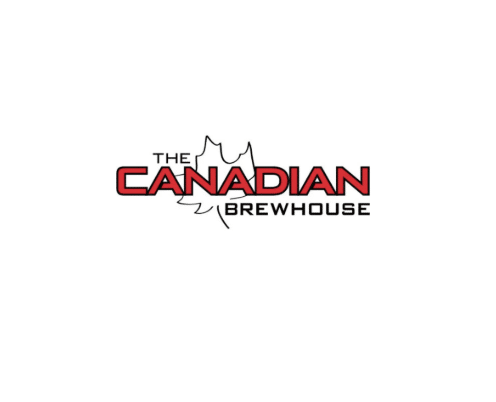An interview with Amie Jonas
Conversations around inclusion in the workplace often begin with policy. They involve frameworks, checklists, training modules. But at The Canadian Brewhouse, the journey towards inclusive practices did not begin as a regulatory requirement, it started with a question: how can we better support our communities?
The answer continues to evolve.
The Canadian Brewhouse (CBH), a hospitality business with locations across Canada, has seen firsthand that inclusion is not a singular goal or static program. It’s a living culture, shaped by empathy, community relationships, and leadership that reflects the people they serve. The definition of inclusion here moves beyond demographics, it’s about building systems that actively welcome, support, and grow with people from all walks of life.
Where some organizations have looked to meet a diversity quota, CBH has looked inward at its stores, staff, and customers. They noticed the answer was different depending on the city or province. The team began building something new: a commitment to showing up as a mirror to the communities they serve.
The Canadian Brewhouse starts with the recognition of the community itself as a valuable asset. Stores began seeking out people who were already embedded in their communities , individuals who had relationships, who understood local dynamics, and who wanted to be part of something bigger than a job to be a part of their teams.
Leadership teams started shifting in perspective too. Diversity across leadership meant decision-making now included lived experiences. Slowly, the company realized that creating space for people wasn’t about complicated protocols, it was about small, meaningful changes that made the workplace feel human.
“Regardless of where we all come from, we have an opportunity to be together at work.” shares Amie Jonas, Manager, Employee Experience.
This idea shows up in small ways, like adjusting training timelines, offering part-time options, or creating printed maps for memory support. It also shows up in more systemic efforts, such as launching leadership development programs or formalizing communication channels for employees to request support. But the root is always the same: belonging.
There is often an assumption in the hospitality industry, as there are many sectors, that inclusive hiring requires massive operational change. That fear has kept many businesses from moving forward.
At CBH, leaders have chosen curiosity instead.
They started by asking about who wasn’t currently reflected in their workforce. From there, they leaned into partnerships with Gateway Association and EmployAbilities, opening pathways for people with disabilities to access long-term, supported employment within the company. Over the past two years, 13 individuals have been hired through these partnerships, and each one is still employed today.
In these stories, what stands out is not a specific accommodation, but the systems of care built around each person. Employment coaches stayed in touch after hiring. Leaders checked in regularly, not just on performance, but on comfort. A map was created when someone needed support navigating a store. Extra training was given where needed. These weren’t seen as burdens, they were welcomed as improvements that anyone could access and directed to the team as a whole.
“Those little accommodations that we have to make for how people integrate into our team, are improvements for all of us.”
Although inclusion has always existed in some form across the company, leaders note a cultural shift when the process became centralized under HR and leadership. Where partnerships with employment service providers once fell off due to store-level constraints, a new system was created to ensure consistency and long-term support.
The shift became visible in other ways, too. One of the first employee referrals for a person with a disability came from someone at the corporate level, a quiet but powerful sign that something had changed. It wasn’t about having an inclusion strategy anymore, it was about acting on one.
Recognition followed. Awards from Gateway and EmployAbilities helped solidify that the business was doing something worth noticing. But for those involved, the shift had already happened.
“Now there’s visibility around it,” one leader said. “We talk about it more.”
Beyond hiring, CBH has been building internal programs to grow inclusive leadership from within. One initiative, “Bet on Your Own”, gives employees a space to express interest in learning, growing, or shifting roles. The process is intentionally accessible, low-barrier, and supportive of rejection. Each submission is reviewed by a designated leader, and next steps are communicated directly.
Another initiative , “Ignite”, offers project-based leadership development to team members who are interested in building new skill sets. These programs sit alongside scholarship opportunities and a full HR manual for managers to support staff in conversations about career growth.
The structure is less about corporate ladder climbing and more about empowerment. Employees are encouraged to bring their full selves to work, and to see work as a place that reflects their potential.
Leaders are taught to listen actively, advocate where possible, and stay open to feedback. They are encouraged to treat accommodations as part of good leadership, not as exceptions. Whether it’s needing more time on the culinary line, taking time off for mental health, or adjusting for illness, flexibility and accommodation is built in.
Related to disability, CBH runs an annual fundraiser for Mental Health Awareness Month in June. While the fundraiser is public, the internal message is what matters most: employee wellness is non-negotiable. And it’s more than an initiative, it’s a daily practice of care.
Although CBH has not yet formally participated in Disability Employment Awareness Month (DEAM), internal conversations are pointing toward a desire to do so in the coming year. This step, alongside ongoing partnerships and education efforts, will help the business solidify its long-term commitment to inclusive hiring.
Leadership has also expressed interest in developing a national EDI model, one that reflects the diversity of communities across Canada while still being rooted in the local stores and locations. There’s hope that stronger partnerships can be formed with schools, organizations, and other community leaders to ensure that the momentum continues.
When asked what advice they would give to other employers, Amie shares an answer –
“Lean into reflecting your community. Step away from fear and into curiosity. Diversity and inclusion bring value, not complexity.”
The fear of change is real, but it’s often based on misunderstanding. Inclusion doesn’t mean reinventing a business, it means reintroducing it to all the people it exists to serve.
The Canadian Brewhouse is still learning, still adjusting, and still listening. But if there is anything that this journey has shown, it’s that inclusive practices lead to stronger teams, loyal employees, and workplaces that people genuinely want to be part of.
Because when work becomes a place where you belong, it becomes more than a job. It becomes a community.
Author : Mariebelle Sawma





